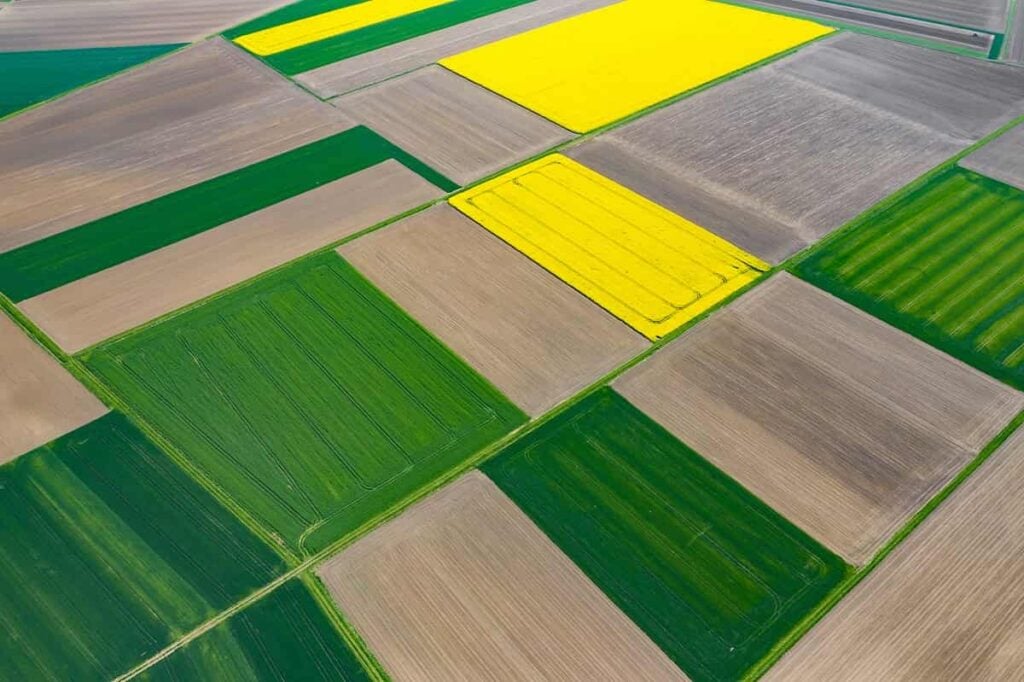ESG Investing – The Search for Ground Truth
Table of contents

Pundits were recently fawning over the proclamation by 180 companies – including some of our favorite dividend growth investing names like Johnson & Johnson (JNJ), 3M (MMM), and The Coca-Cola Company (KO) – that maximizing shareholder value is no longer the raison d’etre for these companies. This slap in the face of fiduciary responsibility should be firmly denounced by all investors because the premise is preposterous. The “evil capitalist corporations” that everyone on Twitter complains about have somehow sinned, and now they’re promising to do right going forward. And we’re entrusting them to – in addition to running these incredibly complex businesses – figure out the best way to spend their profits on “doing good.” What about just returning the money to shareholders who are perfectly capable of determining which charities they should donate to and how much they should donate? This “new purpose for corporations” makes about as much sense as letting the Twitter mob guide your Environmental, Social and Governance (ESG) methodology.
Whether or not ESG investing produces alpha is debatable. What’s not debatable is that letting corporations self-report on how “good” they are – or even worse, letting corporations decide what is “good” – makes no sense at all. The process of determining the impact a corporation has on the environment needs to happen at a level RS Metrics refers to as “ground truth.”
The Search for Ground Truth
Lately, we’ve been looking at how companies can package all that valuable data they have and sell it to financial institutions who use this “alternative data” to make investment decisions with or even to generate alpha with. RS Metrics is a company that creates “primary data.” Using computer vision and artificial intelligence, they analyze satellite images of the earth to uncover insights – what we might call “ground truth” – that are used by all kinds of companies to make better decisions with. For example, here’s a satellite photo of the Tesla factory in Fremont where RS Metrics can actually count the number of Teslas – incredibly, distinguishing between model types – as they roll off the production line:
While RS Metrics uses satellite data for everything from counting Teslas to forecasting the price of metals, one of the more interesting things they’re working on involves ESG data. In speaking with alternative data companies, we found there is a strong demand for ESG data, especially verifiable primary data.
One large financial services firm told us that the “E in ESG” – Environmental – is what their clients are having the most difficulty measuring. What sort of data can we gather that helps provide more color and depth around the environmental impact that firms have? Most people agree that self-reporting isn’t going to provide the sort of transparent objectivity we need to make important investment decisions surrounding who is making the planet a better place to live – whatever that means. That’s where we might consider what RS Metrics calls “ground truth.”
If a picture is worth a thousand words, then pictures of our planet are perhaps the best place to look for environmental impact. The factors we use to evaluate the way companies impact the environment in a negative way are as follows (taken from MSCI – the world’s largest provider of ESG research and data):

Some of these factors lend themselves quite well to satellite imagery.
Climate Change
We often refrain from using the term “climate change” because it has been hijacked by people who now use it for political purposes. Those who argue about “whether or not climate change is real” are largely missing the point. Who cares? We can all agree that a cleaner planet is a better planet so let’s focus on getting things cleaned up instead of posting memes on Facebook ad nauseam and hurling insults at one another. One of the most focused on factors when it comes to cleaning up the environment is that of carbon emissions.
According to the EPA, the top-3 sources of carbon emissions are transportation (28.9%), electricity production (27.5%), and industry (22.2%). Here are a few examples of how RS Metrics can measure impact in these areas.
- Transportation – Using satellite images, RS Metrics has been able to measure – with 99.99% accuracy – the production of Tesla cars at their Fremont, CA plant. Incredibly, they’re actually able to distinguish between models of cars being produced and use these observations to validate Mr. Musk’s goals. Just look at this incredible resolution image taken on July 10th, 2018 which possibly shows the ~100 performance Model 3 electric vehicles that Tesla built for test drives.
One of those guys in the golf cart looks a bit hungover today – Credit: RS Metrics Similarly, they can analyze the entire supply chain of green transportation by measuring the output from battery producers for example. When it comes to clean energy to power electric vehicles, they can monitor the progress and total amount of solar panels installed in any given area. The same holds true for wind farms.
- Electricity Production: The majority of electricity consumed by Indian and Chinese customers is produced in coal-fired plants. In the case of China, there’s a major effort being made to move towards solar energy. The ground truth method for measuring the impact of coal-fired plants is to look at their consumption of coal. Ever seen a long chain of rail cars filled to the brim with black rocks stretching as far as the eye can see? RS Metrics has, and they’re also able to take measurements at global coal terminals like Richard’s Bay.
In addition to minimizing the impact companies have on the environment, we also want to make sure they’re not exploiting our limited natural resources.
Natural Resources
Water is the New Gold
We’ve talked before about how water is the new gold, so it only makes sense that it’s one natural resource we might try and protect. We’re able to measure water tables from satellite pictures so we can then measure the amount of water being used by various industries. The textiles industry is one of the most water-intensive industries worldwide according to a great article by Thomas Insights which talks about how a single pair of skinny jeans found in the closet of every millennial today requires about 2,866 gallons of water to create (below numbers in liters so divide by 3.785 to get gallons).

As a result, fashion designers and clothing retailers are now cracking down on their supply chains to reward those clothing makers who “behave sustainably.” Are we going to rely on garment manufactures in Bangladesh – the country littered with carbon-belching brick kilns – to tell us how sustainable they are? The better option may be to find the ground truth in satellite pictures by examining the water tables in proximity to garment producers and the pollution of water from the use of dyes.
Hugging Trees from Space
Another natural resource we may want to protect are the three trillion trees on this planet. While celebrities do the world no service by posting false photos of the Amazon fire, we can look to the sky for some ground truth around the actual scale of the fires in the Amazon. If a corporation was responsible for a fire – like the example we showed you before with the California fires – then we can easily measure the impact of that mistake. Likewise, we can measure deforestation over time. Last year, scientists at the University of Maryland analyzed satellite pictures over a 35-year period to see how deforestation has affected the planet in the largest study of its kind ever conducted. Turns out that we’re in a lot better shape with 7% of the Earth’s surface covered by new trees.

If scientists can perform this sort of analysis using old satellite images, just imagine how much more accurately this can happen today. It’s very easy to map out an entire country into a set of pixels that represent forested lands and then overlay the land with ownership records. For all the lands owned by publicly traded firms, it’s easy enough to use machine learning algorithms for determining if each pixel is forested or not.
Pollution and Waste
One industry that’s notorious for polluting the environment is the mining industry. They’re a closed bunch that don’t like it when people come snooping around asking questions as we learned during our recent trip to one of the biggest silver mining operations in the United States – Lucky Friday Mine. Fortunately, there’s no hiding from the eyes in the sky which can now tell us everything we need to know about how mines are impacting the environment. For open-pit mining, we can measure the circumference of the mine to determine how deep it is, then estimate the size of the operation. The effects of mining can then be tracked downstream of nearby water bodies to detect the impact mining operations have on polluting water sources.
Another visible effect on the environment are mining tailings – the ore waste that comes from mines. The storage and handling of tailings are a major environmental issue that recently reared its ugly head following the Vale dam disaster. An article by Mining.com earlier this year talked about how “Brazilian authorities and companies involved with river water management are trying to stop the torrent of mining waste from reaching the Sao Francisco river.” Turns out that mining waste is quite colorful and easily monitored using satellite imagery.
That’s the sort of ground truth that mining companies can’t escape so they’ll need to address it. Rio Tinto – the green mining company of the future – might even look to use such imagery to demonstrate a reduction in their environmental impact over time.
Conclusion
You have to beat the system to change it. We invest our hard-earned dollars in companies that will show us superior returns over the long run. Being the responsible adults we are, we can then decide which causes we want to help subsidize or – and bear with us on this one because it’s a really crazy idea – we may choose to invest in profitable businesses that make the world a better place. Why? Profitable businesses scale. Throwing money at some charitable cause so your multi-billion-dollar corporation can appear “woke” benefits nobody. We should all search for ground truth when deciding how a company conducts itself across the globe and we should focus on maximizing shareholder value. These two things are not mutually exclusive.
Sign up to our newsletter to get more of our great research delivered straight to your inbox!
Nanalyze Weekly includes useful insights written by our team of underpaid MBAs, research on new disruptive technology stocks flying under the radar, and summaries of our recent research. Always 100% free.

















